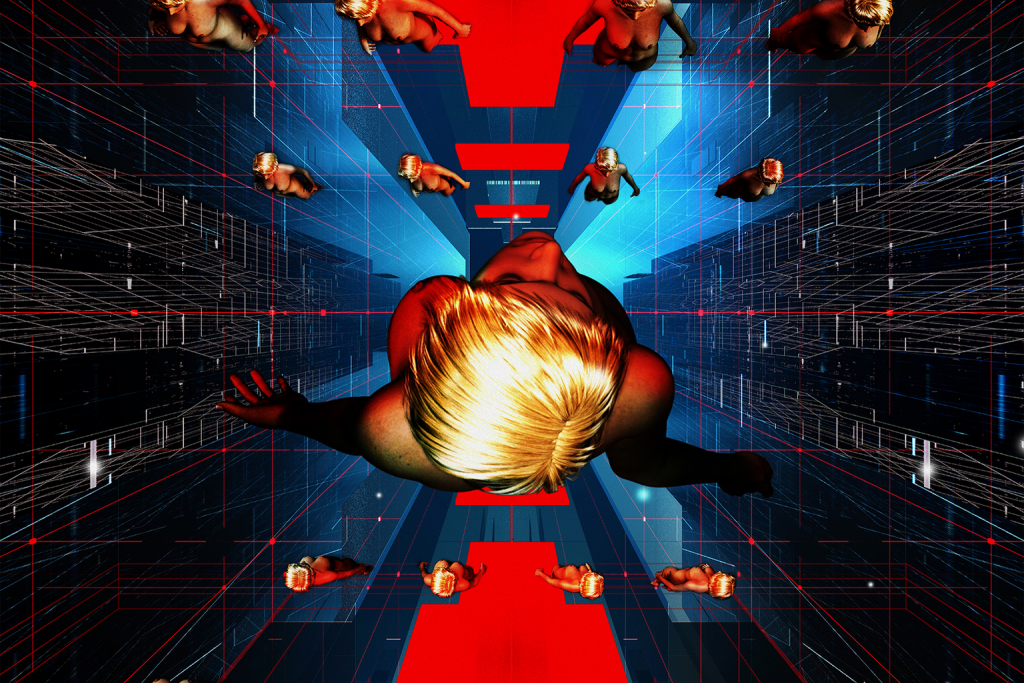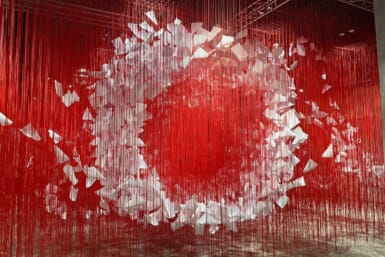Certain words escape us, like a slippery fish in greasy palms, when we start discussing futuristic ideas. Todd Silverstein, poet and co-founder of Coem, talks of dark universes and bringing stars together, while the other co-founder, poet and translator Jordan A.Y. Smith reaches for some visual and audio aids. Multimedia, multilingual, multimodal, intersectional and cross-pollinated, the poetry and tech combo is a new project in need of a new language. Coem (stylized as CŌEM), the portmanteau of “code” and “poem” is just the beginning. That slippery fish metaphor also works when thinking of creatives trying to grasp emerging tech, or techies wrestling with creativity. What they need is each other to reel in new bigger ideas. Coem is where that happens.
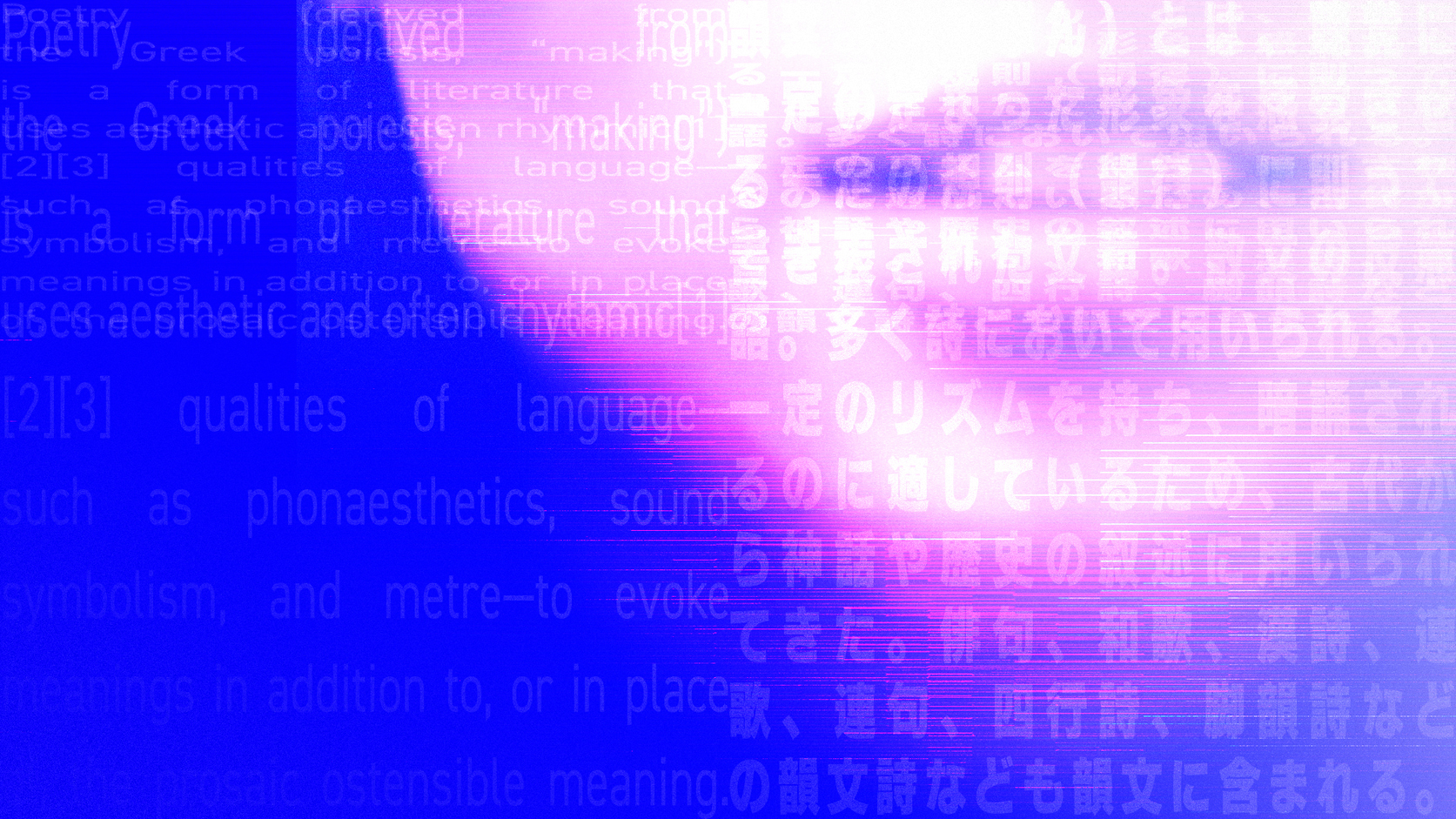
Coem is a Constellation of Community and Collaboration
“I felt that poetry was the art form most behind on tech,” Silverstein tells TW. He says he’s always been tech-adjacent, having worked for a few software businesses and as a consultant producer on the popular HBO comedy series Silicon Valley before moving to Tokyo. Both he and Smith wanted to make poetry more accessible, more visible, more tangible, more celebrated.
Smith and Silverstein were joined by poet Yuki Nagae, the third co-founder, as well as artist Jason Scuderi, coder Patrick Stein and then poets Keijiro Suga, Forrest Gander, Misumi Mizuki and Miki Yuuri, audio engineers Darin Dahlinger and Jae Bordley and other creators. They collaborate on a project-by-project basis with other poets, coders, engineers, artists and all kinds of creatives, from digital NFT artist Mad Dog Jones to former Mori Art Museum director Fumio Nanjo.
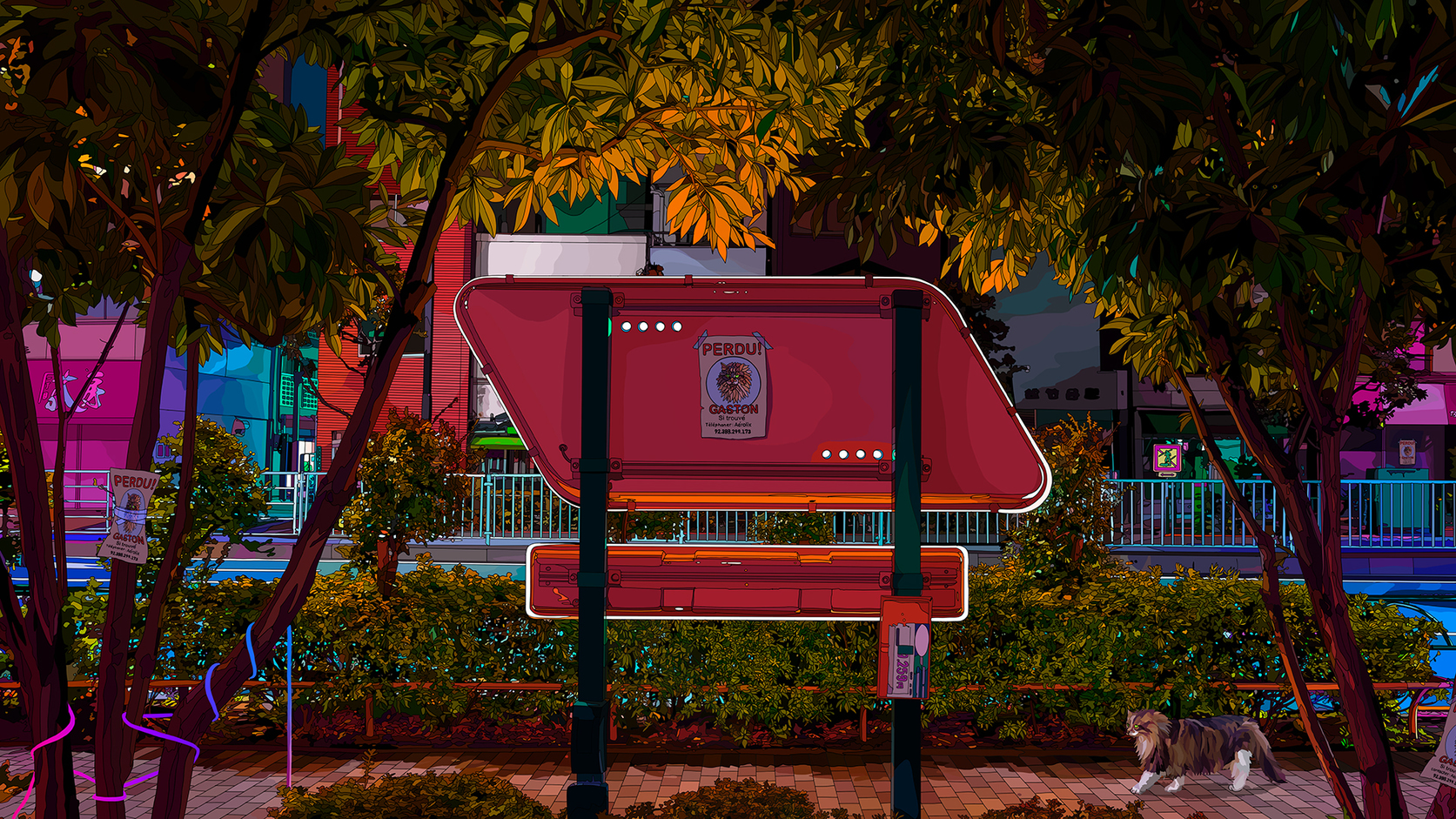
Lost Cat. ©Mad Dog Jones
Coem is all about collaborations. Anyone can contact them with an idea through their website. There are only two conditions: poetry has to be the focus and it has to be interdisciplinary.
Scuderi, the artist behind the majority of Coem’s branding and visuals, describes the collective as an ongoing creative incubation project that allows for experimentation between multiple artistic disciplines. Coem wants to empower poets to explore new avenues and see what kind of wild and unorthodox ideas poets throw at coders. The result is people who would probably have never met otherwise now buzzing with new ideas and creating for and with each other. Stein, one of the key coders in the collective, has become a poetry fan through his work with Coem.
“I learned a lot about poetic structure and timing in particular, which is something that really jived with my engineer’s brain, and it’s proving to be a bit of a gateway drug into the broader world of poetry.”
Software is a tool, just like the typewriter or the printing press. Smith and Silverstein are adamant that tech is not replacing poets but giving them binary code wings and a high-tech playground. “It’s augmented creativity,” Smith explains. “We’re using AI to surprise us and get us out of some creative patterns.”
Technology not only helps poets create differently, but also gives readers (or, to use a more tech term, “users”) different ways of engaging with poetry. Multimedia poems wake up all of the senses and enhance imagination, while other Coem projects aim to upgrade the passive reading experience into playful personalized experimentation.
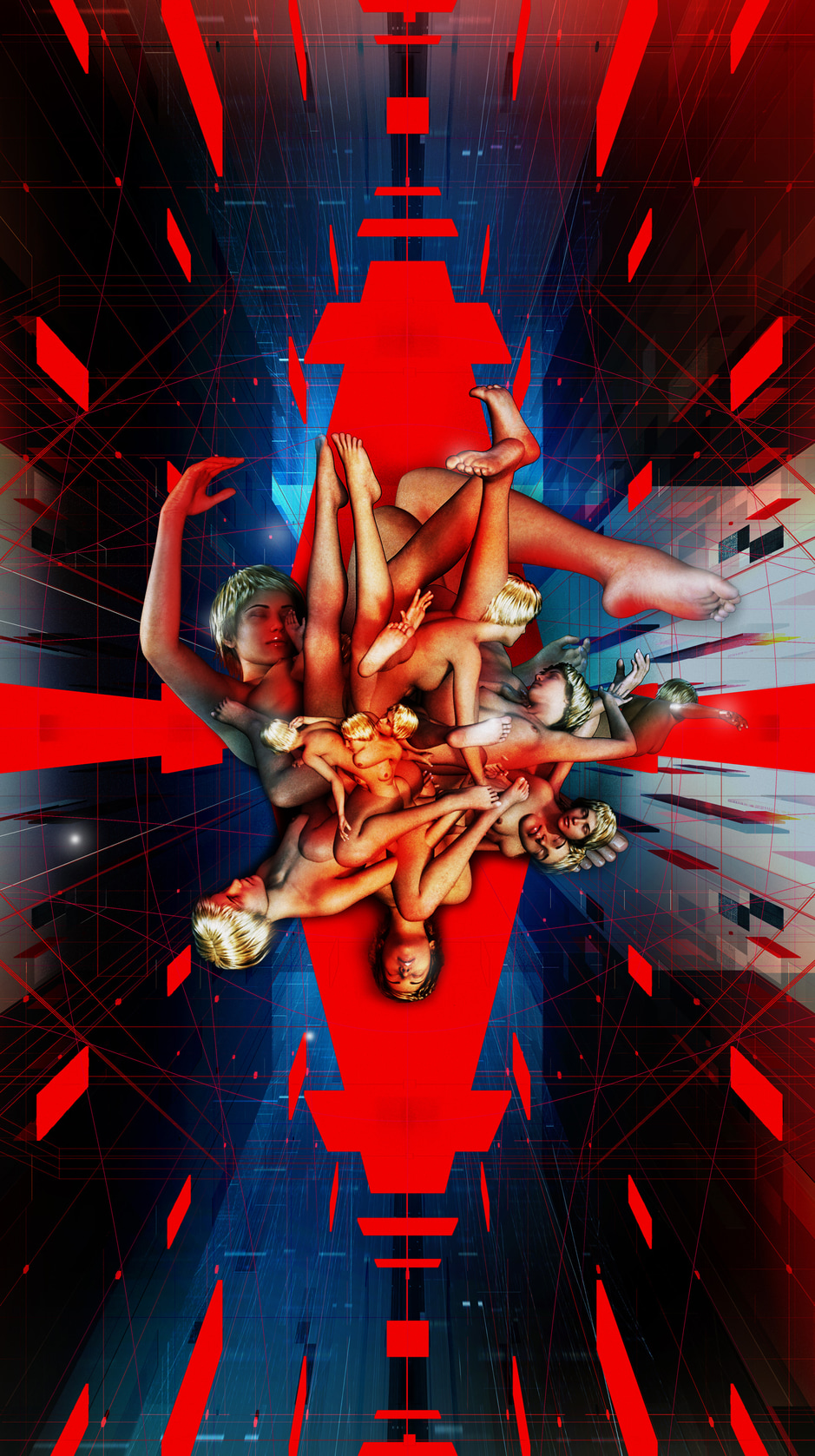
Anatta – Door 03, by Lasergun Factory/J. Scuderi
“As an artist, I attempt to connect humanity with technology in the work I produce. Poetry is an emotionally purpose-driven communication tool and, in essence, the text-based personification of being human,” Scuderi says.
Poet Nagae has always strived to transform poetry from 2D to 3D using various audio and video tech. “I feel that technology is a medium that can dismantle temporal and spatial limitations and make the world perceived from a metaphysical perspective available to all people. That makes it similar to poetry.”
Coem is Coordinates & GeoPossession
The thirst for exploring new ideas and merging worlds brought all the “coembers,” as the members call themselves, together. The Coem collective formed just weeks before the pandemic, so they have been quietly typing away in the backend. And as limitations often force us to be creative, this period has paused some ideas, like Poet’s Pulpit (which gathers people to interact in a physical space), and given birth to others, like GeoPossession (which involves walking around Tokyo and listening to poems recorded with a 3D audio microphone).
GeoPossession is about returning works of literature to their point of origin. The poets go to where that first spark of inspiration was, and read and record their work there. Then, others can listen to the 3D soundscapes, totally immersed in that moment in time. “This audio experience is as close to being inside the poet at that place, at that time,” Smith explains.
Nagae, who is spearheading the project, says she chose different voices of writers who represent Tokyo. This use of disparate figures reflects the diversity and energy of the world’s largest metropolis. Currently, 14 poems in Japanese are available to listen to around Tokyo via Kalkul’s Aura app (free and only on iPhone) and Coem is working on recording more, especially in English. There’s also an idea to project the Tokyo GeoPossession map onto other cities, making it travel.
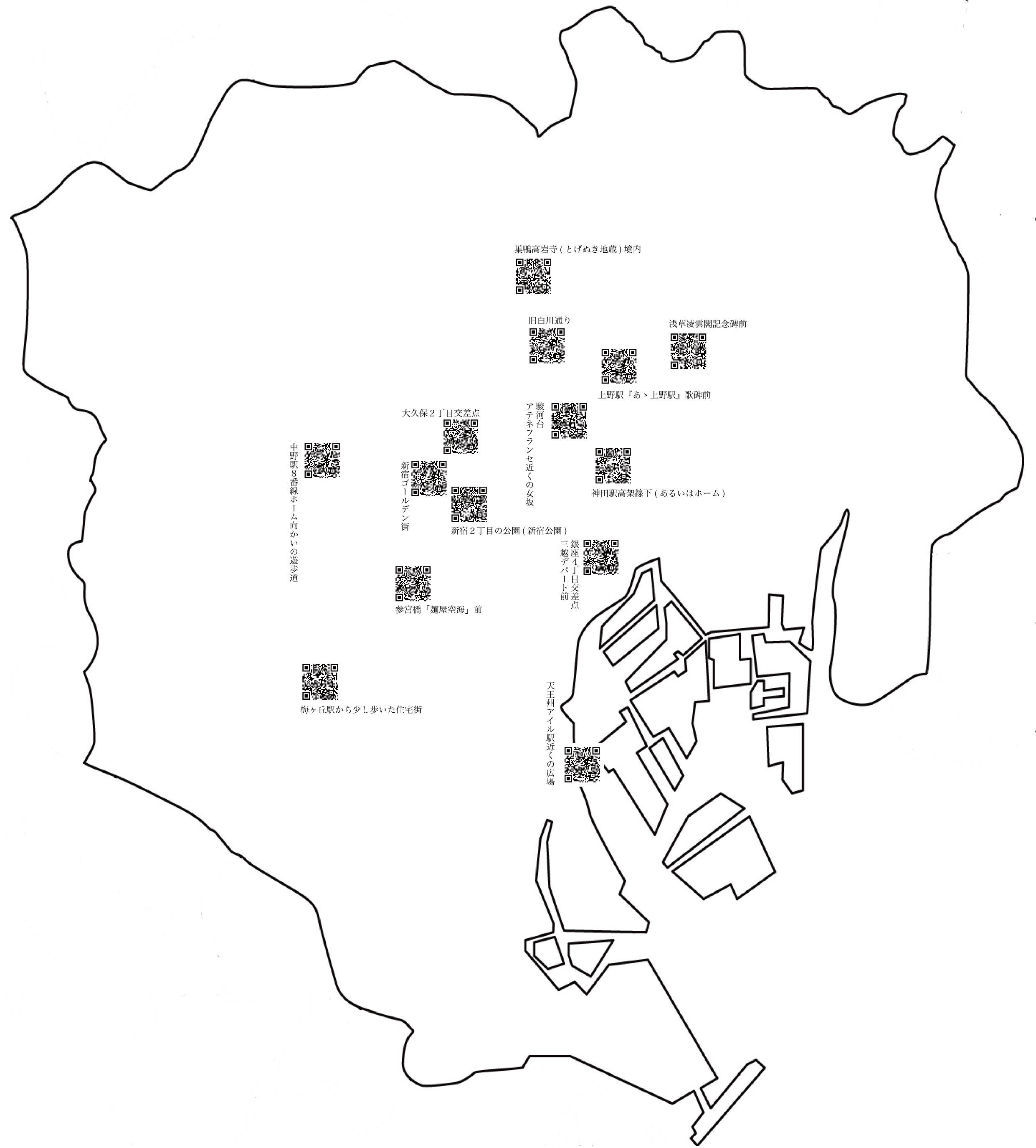
Coem is Constant Contemplation
The coembers are already aglow, little flames popping up in the form of single projects. Many prototypes are already completed in the backend too, pending release.
Seasons is a poetry album project that already has one work released on Coem’s YouTube channel, with more due to be released. In it, sound engineer Jeff Miyahara mixes a reading by poet Miki Yuuri and a prayer by a Shinto priest with AI-generated visuals.
In the NFT sphere, both Scuderi and Mad Dog Jones are working on art and poetry NFTs for sale to fund Coem’s future endeavors. Silverstein and Smith also hope that Coem collaborations can result in some tech tools for commercial use as another method of funding poetry.
POETraits (a play on “poetry,” “traits” and “portraits”) is an app prototype created together with Adam Varga, who has worked on the Oculus tech for Facebook (now Meta). This app creates selfies made of the poetry you write or read, incorporating all your traits. Similarly, the Sound Sculptures project will create poetry sculptures based on audio processing with the possibility of then preserving them as an AR hologram or a 3D printed sculpture.
Ultimately, the dream is to create an interactive digital poetry museum that has it all, the teamLab of literature if you will. Something for which we don’t yet have the words, but Coem is surely working on it. One poem and one code at a time.

